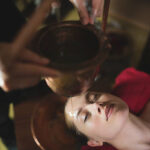
If you suffer from plantar fasciitis, you know how uncomfortable and painful it can be. The good news is, there are Heel Support For Plantar Fasciitis options available that can help you manage your symptoms and find relief. In this blog post, we’ll discuss the best support options for managing plantar fasciitis symptoms, including heel support, orthotics, stretching exercises, and more.
Heel Cups
Heel cups are a type of shoe insert designed to provide support and cushioning for the heel. They work by redistributing pressure away from the affected area, helping to alleviate pain and discomfort caused by plantar fasciitis. Heel cups are typically made of silicone or other soft materials and come in a variety of sizes to fit different shoe sizes.
When selecting a heel cup for plantar fasciitis, it’s important to
look for a product that offers adequate support and cushioning. A good heel cup should fit comfortably inside your shoe without adding too much bulk or weight. Some heel cups are designed to be worn all day, while others are more suitable for use during specific activities such as running or hiking.
One of the main advantages of using heel cups for plantar fasciitis is that they can be easily inserted into your existing shoes, allowing you to continue wearing your favorite footwear while still getting the support you need. However, it’s important to remember that heel cups alone may not be enough to fully manage the symptoms of plantar fasciitis, particularly if you have a severe or chronic case of the condition.
Overall, heel cups are a convenient and cost-effective option for managing plantar fasciitis symptoms. While they may not provide a complete solution on their own, they can be a valuable part of a comprehensive treatment plan that includes other therapies such as physical therapy, stretching exercises, and lifestyle modifications.
Arch Supports
Another great option for managing plantar fasciitis symptoms is to use arch supports. These devices work by providing extra support and cushioning to the arch of the foot, which can help to reduce the amount of pressure that is placed on the plantar fascia. This can help to alleviate pain and discomfort, and can also prevent further damage to the plantar fascia.
Arch supports can come in a variety of different forms, including shoe inserts, gel pads, and braces. Shoe inserts are a particularly popular option, as they can easily be slipped into any pair of shoes and provide
constant support throughout the day. Gel pads can be used to provide targeted support to specific areas of the foot,
while braces can be worn at night to help stretch and support the plantar fascia.
When choosing arch supports, it is important to look for ones that are specifically designed for plantar fasciitis. These supports will typically provide extra cushioning in the heel and arch areas, and may also include special features like shock absorption or extra arch support.
Overall, arch supports can be a great tool for managing plantar fasciitis symptoms. They can help to reduce pain and discomfort, prevent further damage to the plantar fascia, and improve overall foot health. If you are struggling with plantar fasciitis, be sure to consider incorporating arch supports into your treatment plan.
Orthotic Inserts
Orthotic inserts are shoe inserts that are designed to provide support and stability to the foot. They can be particularly effective in managing plantar fasciitis symptoms by redistributing pressure and correcting abnormal foot positioning. Orthotic inserts are available in various shapes and sizes, and they can be custom-made to fit the unique shape of your feet.
When choosing orthotic inserts for plantar fasciitis, look for inserts that have good arch support and cushioning. The inserts should also be firm enough to support the foot, but not so hard that they cause discomfort or pain. Some popular orthotic inserts for plantar fasciitis include:
1. Powerstep Pinnacle Maxx
The Powerstep Pinnacle Maxx orthotic inserts offer firm arch support
and a deep heel cradle to provide superior stability and shock absorption. They are also made with a dual-layer cushioning system to help distribute pressure and reduce foot fatigue.
2. Spenco Total Support Max
The Spenco Total Support Max orthotic inserts are designed to provide maximum support and stability for the entire foot. They feature a deep heel cup and advanced arch support to help correct overpronation and improve foot alignment. The Best Support For Plantar Fasciitis also have a cushioned forefoot and antimicrobial top cloth to help prevent odors.
3. Superfeet Green
The Superfeet Green orthotic inserts are a popular choice among runners and other athletes. They offer a high degree of arch support and stability, and they are designed to absorb shock and reduce stress on the feet. The Superfeet Green inserts also have a deep heel cup and a biomechanical shape that helps to improve foot function.
Overall, orthotic inserts can be a highly effective way to manage plantar fasciitis symptoms. They can help to reduce pain, improve foot function, and prevent further damage to the plantar fascia. If you are struggling with plantar fasciitis,
be sure to speak with a podiatrist or other medical professional about your treatment options, including orthotic inserts.
Night Splints
Night splints are a helpful tool in managing plantar fasciitis symptoms. They are designed to keep the foot in a neutral position while you sleep, which can prevent the plantar fascia from tightening and shortening overnight. This can be especially beneficial for people who experience pain and stiffness in the mornings.
Night splints come in different styles, but they all work in a similar way. They usually consist of a brace that wraps around the calf and foot and holds the foot in a flexed position. This stretches the plantar fascia and Achilles tendon, which can help to alleviate pain and improve flexibility.
Some people find night splints uncomfortable to wear at first, but most adjust to them after a few nights. It’s important to choose a night splint that fits well and is comfortable to wear, as you will need to wear it
consistently for several weeks or months to see results.
It’s also worth noting that night splints may not be the best option for everyone. If you have mobility issues or difficulty getting in and out of bed, you may find night splints cumbersome and impractical. In these cases, other support options such as orthotic inserts or physical therapy may be more suitable.
Overall, night splints can be a helpful addition to your plantar fasciitis management plan. If you are considering using a night splint, talk to your doctor or physical therapist to see if it is the right option for you.
Physical Therapy
Physical therapy is a crucial element in managing the symptoms of plantar fasciitis. The goal of physical therapy is to strengthen the foot muscles, improve flexibility, and correct any underlying structural problems that may be causing your condition. Your physical therapist may recommend exercises such as calf stretches, toe curls, and towel pickups to improve the strength and flexibility of your feet.
They may also recommend other forms of treatment such as massage therapy, electrical stimulation, or ultrasound therapy to alleviate pain and inflammation. In addition to exercises and therapies, your physical
therapist may suggest lifestyle changes such as wearing supportive shoes or avoiding high-impact activities.
Working with a physical therapist can be an excellent way to find relief from
plantar fasciitis symptoms and prevent future issues from arising. Your therapist will create a customized treatment plan that takes into account your individual needs, symptoms, and goals.
If you’re dealing with plantar fasciitis, don’t hesitate to seek the help of a physical therapist. With the right exercises and therapies, you can improve your foot health and get back to the activities you love. One benefit of physical therapy is that it can address the root cause of your plantar fasciitis. For example, if your condition is caused by overpronation (when your foot rolls inward), your therapist may recommend shoe inserts or custom orthotics to help correct your gait and provide more support for your arches.
Another advantage of physical therapy is that it can help prevent the need for invasive treatments such as surgery. By strengthening your foot muscles and improving your flexibility, you can reduce
the strain on your plantar fascia and promote healing naturally.
It’s important to note that physical therapy is not a quick fix for plantar fasciitis. It may take several sessions to see results, and you may need to continue your exercises and therapies at home. However, with patience and dedication, physical therapy can be an effective way to manage your symptoms and improve your overall foot health.
In summary, if you’re looking for a support option for plantar fasciitis,
physical therapy should be at the top of your list. Working with a qualified therapist can help you address the root cause of your condition, reduce pain and inflammation, and improve your overall foot function. Talk to your doctor or podiatrist to learn more about physical therapy for plantar fasciitis.
Conclusion
Plantar fasciitis can be a debilitating condition, but there are plenty of support
options available to help you manage your symptoms. Heel cups, arch supports, orthotic inserts, and night splints can all help provide relief by redistributing pressure, supporting your arch, and keeping your foot in a neutral position. If your plantar fasciitis is severe, you may want to consider physical therapy as well. Remember, the best support option for you
will depend on the severity of your symptoms and the shape of your foot,
so be sure to consult with your doctor or podiatrist before making any major changes to your footwear or treatment plan. With the right support and care, you can overcome your plantar fasciitis and get back to living your best life.










